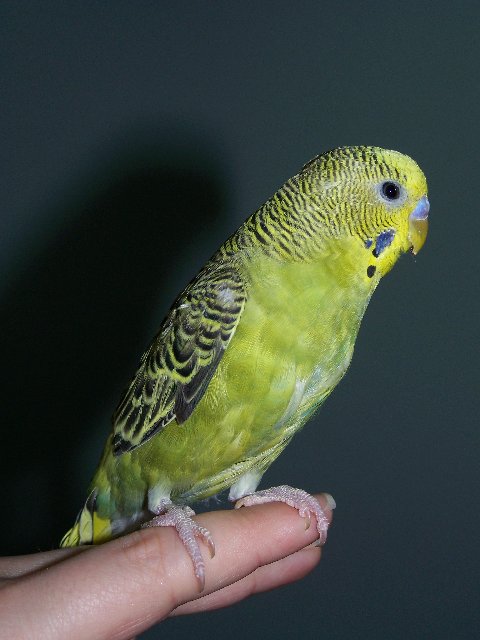Chick Development
This page will walk you through one chicks development. There will be a short description of each step along with illustrative photos. First you will learn about the candling of an egg, then the hatching, a week by week and finally adulthood. It is amazing to watch a small egg transform into an adult bird. I hope you enjoy.
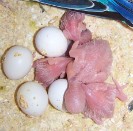
Day 1 Egg is laid
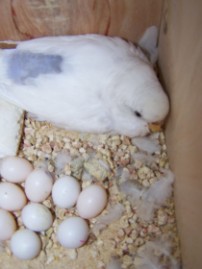
Days 5-7 Egg is candled
Candling is the way a breeder determines if the egg is fertile or infertile. This should be the first time you have healed the egg. Washing your hands before handling the egg will make sure no pathogens pass through the eggshell. I use a flashlight to candle my eggs. At this stage of development you will either see a yellowish yoke or you will see a small cluster of red vein like structures holding a dark red center. The second choice being the fertile egg.
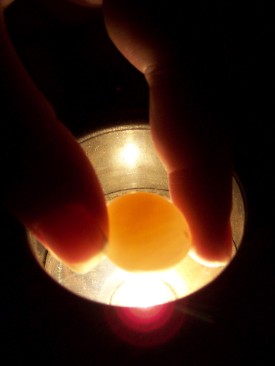
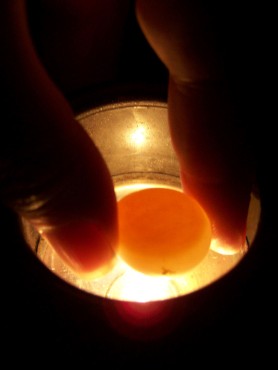
Days 8-17 We wait
Now the chick develops in the egg. The hen will roll and tend to the eggs making sure they develop correctly. The eggs gets darker as the chick grows larger. You can actually see where the chick has started to cut a circle around the inside of the egg with its egg tooth. The egg tooth is a small sharp tool at the end of the chicks beak. Much like a pick the chick uses the tooth to cut through the eggs shell.
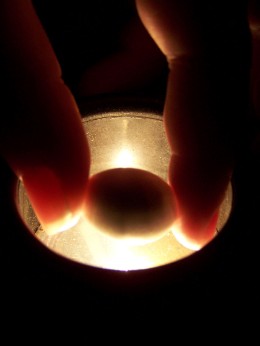
Days 18-21 Hatching will occur
Anywhere between these four days the fertile egg will hatch. It may take as long as two for the small chick to crack through the egg shell. The chick creates a circular cut in the egg with its egg tooth. Then the chick will chip a small hole in the egg. After doing this the chick will push the egg apart and hatch. The chick will resemble a pink jelly bean. It emerges with no feathers and their eyes closed tight. The chick will depend the hen to keep it warm and fed.
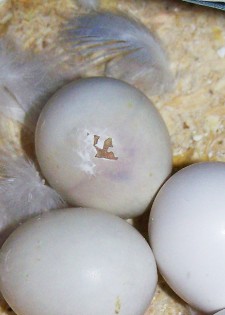
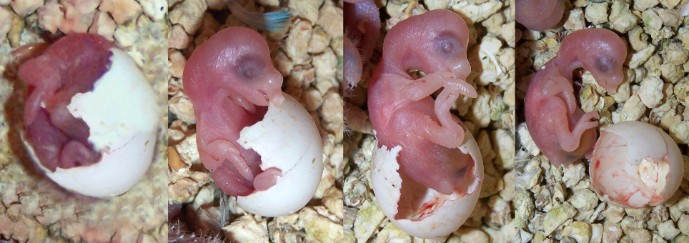
Week 1
The chick is as small as a quarter and pink the first week. It don't yet have the strength to lift its heads. So the hen and cock role the weak chicks on their backs at feeding time. The chick come out of the egg very small and helpless but by the end of the week they will have nearly quadrupled in size. It seems like you could watch them grow. On the left is a day old chick compared to a week old chick.
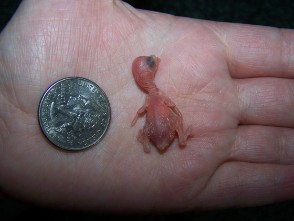
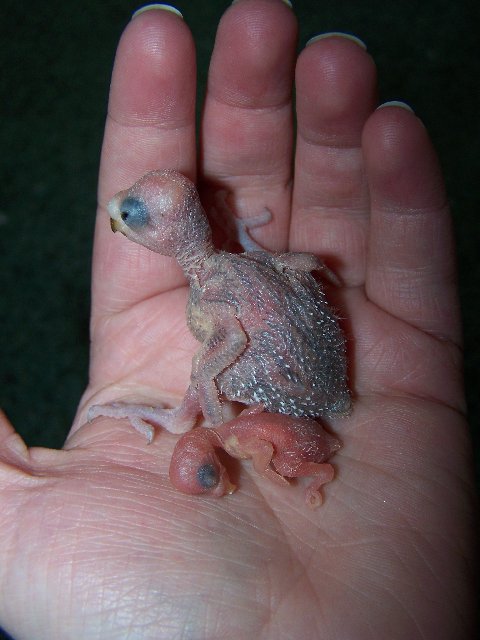
Week 2
The chick will open its eyes during week two. It also starts to grow pin feathers. By the end of the week will be covered with down. The adult feathers will also start growing. They look like small spikes protruding from the chicks pink skin. The chick also start moving around by itself and becomes very curious. This is when I start to hand feed the chick once or twice a day.
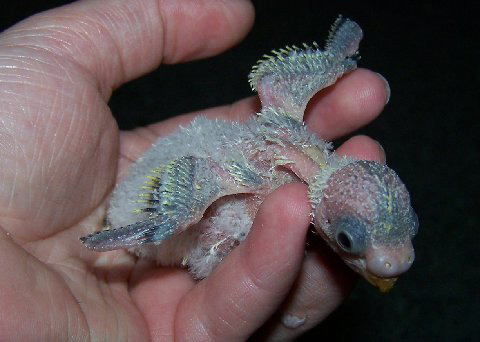
Week 3
The chicks down has grown in nicely now. It will look like a big puff ball. By the end of the week the adult feathers will start to cover the chicks wings and head. You will be able to see what color mutation the chick will be. The chick can lift its head for longer periods of time and may start to stand tall. But as you can see it the photo it still tiers easily and lays on its chest for support.
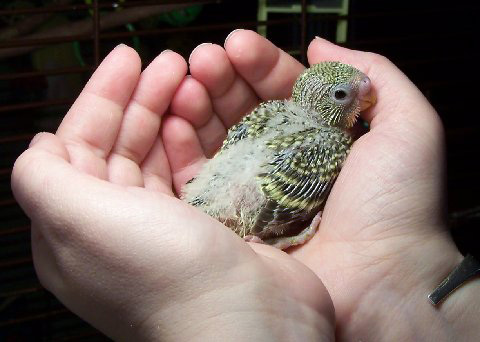
Week 4
The chicks adult feathers will be almost completely grown in. Only a small amount of down can be seen around the neck, back and chest of the chick. The chick may start to venture out of the nest, but will probably need help getting back in.
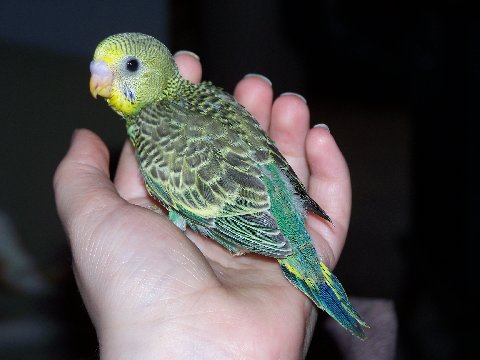
Week 5
The chicks adult feathers will cover its entire body. The chick should be able to get in and out of the nest on its own. It may even start to pick at the seed dish. This is also around the time where the parents start weaning the chicks. I will start giving the chicks seeds instead of chick formula. This is a good time to clip the chicks wings as well. I gave this chick a show clip only leaving the two longest flight feathers on each wing.
Week 6
By six weeks the chick will start to look and act like an adult bird. The chick will be climbing in and out of the nest box. It will also be exploring the cage and testing out its climbing skills. The chick should be standing upright and perching like an adult.
Week 7
The chick will be weaned by now but it may still try to get the cock and hen to feed it. It will be able to climb around the cage with ease. The chicks playful side will now come out. They are able to move around like an adult but they are always looking for new experiences. This is when I will usually put the chicks and their parents in my flight cage so they can interact with my other birds. You may now see if the chicks are male or female by their changing ceres. But depending on the color mutation and the bird you may need to have a gender test done.
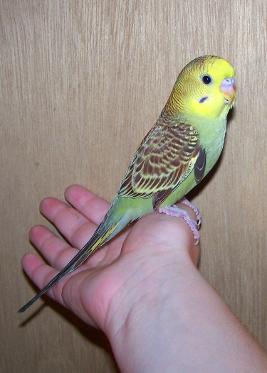
Week 8
The chick will be ready to go to it's new home. It will look like an adult but it will grow a bit bigger. The chick will keep it’s baby bars, the stripes above it’s cere until its first molt.
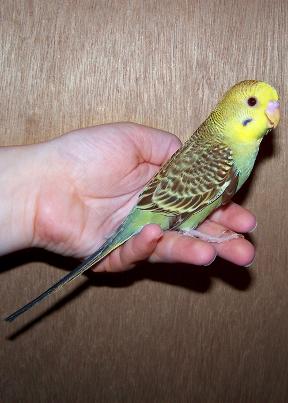
Adult
The first molt usually occurs when the bird is about three months old. This is the first time the bird will re grow it’s feathers much like shedding in a dog or cat. After the first molt it’s plumage will get more intense. The bird will loose it’s baby bars leaving its forehead clear. The cere will change between seven weeks and a year old. Both males and females can come into breeding condition as soon as six months but shouldn’t be bred until both are at least a year old. Some breeders wait until their birds are sixteen months old.
